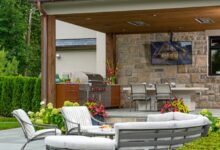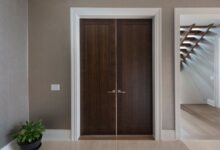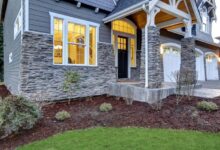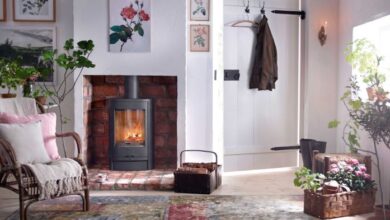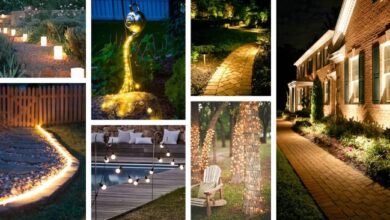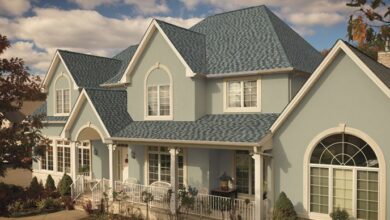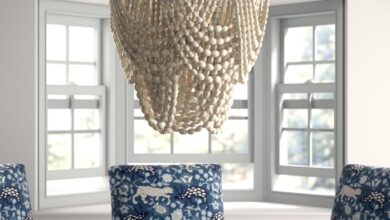Custom Wall Mirrors Reflecting Style and Design
Custom wall mirrors offer a transformative touch to any space, transcending mere functionality to become captivating design elements. From the initial concept to the final installation, the journey of creating a custom mirror is a blend of artistry and precision. This exploration delves into the diverse options available, encompassing shapes, sizes, framing styles, and glass types, to help you envision the perfect reflection for your home or business.
We’ll guide you through the design process, highlighting unique features like etched patterns and integrated lighting. Learn about the manufacturing process, installation techniques, and the factors influencing cost. Discover how custom mirrors can enhance the aesthetic appeal of various room types, from grand entryways to modern bathrooms, and even commercial settings. Ultimately, this guide empowers you to make informed decisions, creating a truly bespoke reflection of your personal style.
Types of Custom Wall Mirrors
Custom wall mirrors offer a fantastic opportunity to personalize your space, adding both functionality and aesthetic appeal. The options available are extensive, allowing for a truly unique reflection of your style and needs. From simple and minimalist designs to elaborate and ornate pieces, the possibilities are virtually limitless.
Mirror Shapes and Sizes
The shape and size of your custom mirror significantly impact its visual presence and functionality. A large, rectangular mirror can dramatically enlarge a small room, while a smaller, circular mirror can serve as a stylish accent piece. Consider the available wall space and the overall design aesthetic of the room when choosing dimensions. The following table provides some examples:
| Shape | Dimensions (approx.) | Material | Style Notes |
|---|---|---|---|
| Rectangular | 48″ x 24″ | Standard Glass | Classic and versatile, ideal for hallways or bedrooms. |
| Square | 36″ x 36″ | Anti-glare Glass | Modern and clean, suitable for contemporary spaces. |
| Circular | 30″ diameter | Beveled Glass | Adds a touch of elegance and sophistication. |
| Oval | 40″ x 20″ | Standard Glass with Wood Frame | A softer, more traditional shape, complements various decor styles. |
Framing Options for Custom Mirrors
The frame significantly influences the overall style of a custom mirror. A simple, minimalist frame can complement modern decor, while an ornate frame adds a touch of classic elegance. Material choices range widely, impacting both the look and the durability of the mirror.Wood frames offer a natural and warm aesthetic, available in a wide variety of stains and finishes to match any décor.
Metal frames, such as those made from aluminum or iron, provide a contemporary and sleek look. Ornate frames, often crafted from wood or metal with intricate detailing, lend a touch of luxury and sophistication. Minimalist frames, typically made from thin metal or simple wood, emphasize clean lines and a modern aesthetic.
Types of Mirror Glass
The type of mirror glass chosen affects both the clarity and the reflection quality of the mirror. Standard mirror glass provides a clear and accurate reflection. Anti-glare glass minimizes reflections from surrounding light sources, making it ideal for bathrooms or areas with bright lighting. Beveled glass features edges that are angled and polished, creating a refined and elegant look. The choice of glass type often depends on the intended use and the desired aesthetic effect.
Design and Customization Options
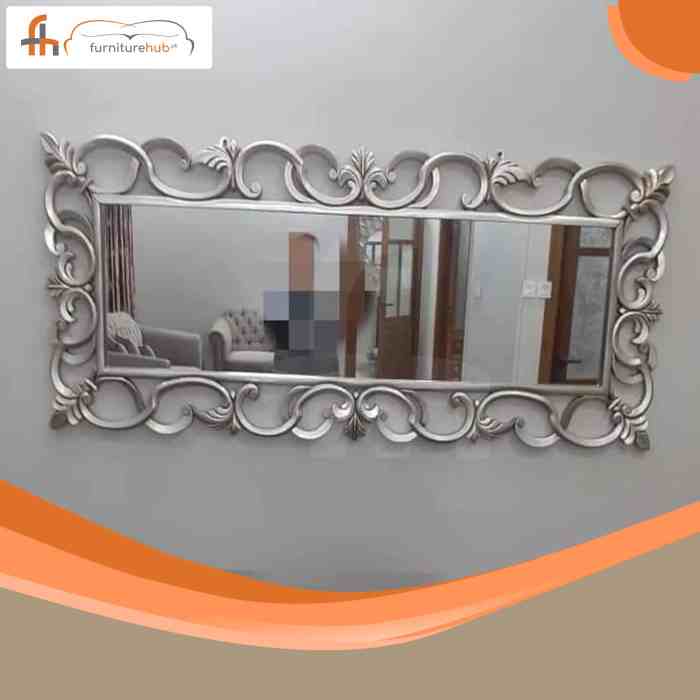
Source: furniturehub.pk
Designing a custom wall mirror offers a unique opportunity to personalize your space with a truly bespoke piece. The process involves careful consideration of your aesthetic preferences, the intended location, and the practical aspects of the mirror’s functionality. This collaborative process ensures the final product perfectly complements your existing décor and fulfills its intended purpose.The journey from initial concept to finished mirror typically begins with a consultation.
This involves discussing your vision, including desired size, shape, style, and any special features. Design professionals can offer guidance and suggestions based on your preferences and the technical feasibility of your ideas. Sketches, digital renderings, or even mood boards can be created to visualize the final product. Once the design is finalized, precise measurements are taken, and the mirror is crafted using high-quality materials.
The process culminates in the installation of your custom-designed mirror, adding a unique focal point to your home or business.
Custom Mirror Design Examples
Several innovative design elements can elevate a custom wall mirror beyond a simple reflective surface. Etched patterns, for instance, can add intricate detail and texture, transforming the mirror into a work of art. Imagine a large, rectangular mirror with a delicate floral etching around its perimeter, softening its lines and adding a touch of elegance. Integrated lighting, either LED strip lighting around the frame or subtle backlighting, creates a dramatic effect, especially in dimly lit spaces.
A round mirror with warm, ambient backlighting can serve as a stylish statement piece in a hallway or bedroom. Unusual shapes are another way to personalize a mirror. Consider a sunburst mirror, its rays extending outwards to create a visually striking focal point. Or perhaps a uniquely shaped, asymmetrical mirror to add a touch of modern flair.
These design features can significantly impact the overall aesthetic and functionality of the piece.
Customization Options for Wall Mirrors
Choosing the right customization options is crucial for creating a mirror that perfectly suits your needs and style. The possibilities are numerous, offering considerable flexibility in achieving your desired look.
- Size: Custom mirrors can be created in virtually any size, from small accent pieces to large, statement-making installations. The size should be carefully considered based on the available space and the desired impact.
- Shape: Beyond the standard rectangular and square shapes, custom mirrors can be crafted in a wide array of shapes, including circles, ovals, hexagons, and even freeform designs. The shape can significantly influence the overall aesthetic and functionality of the mirror.
- Frame Material: A vast selection of frame materials is available, ranging from classic wood (e.g., oak, walnut, mahogany) to modern metals (e.g., stainless steel, brass, aluminum) and even unique materials like reclaimed wood or bamboo. The frame material significantly impacts the overall style and feel of the mirror.
- Glass Type: Different types of glass offer varying degrees of clarity, reflectivity, and durability. Options include standard clear glass, anti-reflective glass (reducing glare), and even tinted glass for a more unique look. Consider the lighting conditions in the room when selecting the glass type.
Manufacturing and Installation
Creating a custom wall mirror involves a precise process, from initial design to final installation. The manufacturing process ensures the mirror meets the client’s exact specifications, while the installation process guarantees a secure and aesthetically pleasing result. Understanding both is crucial for a successful project.The manufacturing of custom wall mirrors typically begins with precise measurements and design specifications provided by the client.
Custom wall mirrors offer a fantastic way to personalize any space, and their versatility makes them ideal for a range of styles. For example, a minimalist approach, often seen in Scandinavian interior design , is beautifully complemented by a large, simple, framed mirror. This reflects light and enhances the feeling of spaciousness, a key element in many custom mirror designs.
This information is then used to create a digital template, which guides the cutting of the mirror glass. High-precision cutting tools, such as water jet cutters or CNC machines, are employed to achieve clean, accurate cuts, ensuring the mirror conforms perfectly to the desired shape and size. After cutting, the edges are carefully polished and smoothed to prevent chipping and ensure safety.
Custom wall mirrors offer a fantastic way to personalize your space, adding both style and functionality. When choosing your mirror, consider incorporating sustainable materials and practices, aligning with the principles of Sustainable home decor for a truly eco-conscious home. This ensures your custom mirror not only enhances your interior but also reflects your commitment to environmental responsibility.
For beveled or decorative edges, additional shaping and polishing techniques are used. Finally, the mirror is inspected for any imperfections before being prepared for installation. Specialized backing may be added for enhanced durability and to prevent warping or moisture damage.
Mirror Installation Methods
The method used for installing a custom wall mirror depends on several factors, primarily the weight of the mirror and the type of wall surface. Lightweight mirrors can often be secured using adhesive strips or specialized mirror clips, while heavier mirrors require more robust methods, such as using sturdy mounting hardware directly attached to wall studs. Different wall materials also necessitate different approaches; drywall requires specialized anchors, while brick walls may require drilling and using masonry screws.
Custom wall mirrors offer a fantastic way to enhance any room’s aesthetic, and their impact is particularly noticeable in a dining area. To truly complete the look, consider pairing your custom mirror with a stunning dining set, perhaps one from this excellent collection of Stylish dining room sets. The right mirror can beautifully reflect the light and amplify the overall elegance of your chosen dining furniture, creating a truly cohesive and stylish space.
Incorrect installation can lead to damage to the mirror or the wall, or even pose a safety hazard.
Step-by-Step Guide to Securely Hanging a Custom Wall Mirror, Custom wall mirrors
Before beginning, always prioritize safety. Wear appropriate safety glasses and gloves. Gather all necessary tools and materials before starting the installation process. This includes a level, measuring tape, pencil, drill (if needed), appropriate wall anchors or screws, and potentially a helper for heavier mirrors.
- Preparation: Carefully measure and mark the desired location for the mirror on the wall using a level to ensure it is straight. Consider the height and placement for optimal viewing and aesthetic appeal. For example, a bathroom mirror should be placed at a height suitable for comfortable use.
- Wall Assessment: Identify the wall type (drywall, brick, concrete, etc.). This will determine the appropriate hanging hardware. Drywall requires wall anchors, while brick or concrete requires masonry screws and potentially a hammer drill.
- Hardware Selection and Installation: Choose appropriate hanging hardware based on the mirror’s weight and the wall type. Follow the manufacturer’s instructions for installing the chosen hardware. For instance, with drywall, use heavy-duty toggle bolts or molly bolts for added security, especially for larger and heavier mirrors. For brick walls, use masonry screws and ensure the pilot holes are correctly sized.
- Mirror Mounting: Carefully lift and position the mirror onto the installed hardware. Ensure the mirror is level and securely attached. Use a helper for larger and heavier mirrors to prevent damage or injury.
- Final Inspection: Once the mirror is mounted, inspect it to ensure it is securely fastened and level. Make any necessary adjustments. For larger mirrors, consider using additional support to prevent sagging over time.
Applications and Uses of Custom Wall Mirrors
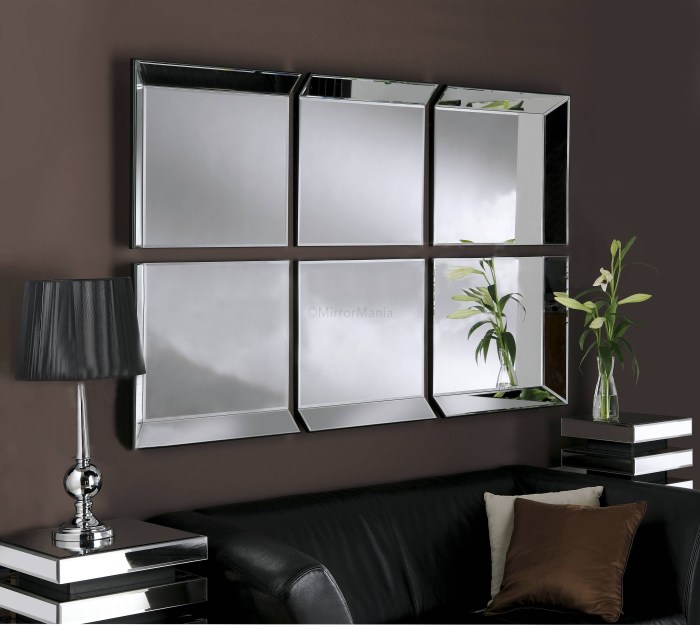
Source: menterarchitects.com
Custom wall mirrors offer a versatile design element, capable of transforming the aesthetic and functionality of various spaces. Their impact extends beyond simple reflection, enhancing the perceived size, brightness, and overall ambiance of a room. The ability to tailor size, shape, and finish allows for seamless integration into any design scheme, creating a unique and personalized touch.
The strategic placement and design of custom mirrors can dramatically alter the feel of a room. In smaller spaces, they can create an illusion of greater depth and openness, while in larger areas, they can be used to break up monotony or highlight specific architectural features. The choice of frame and finish further contributes to the overall aesthetic, allowing for seamless integration with existing décor or the creation of a striking focal point.
Custom Mirrors in Residential Settings
Custom mirrors find extensive application in homes, enhancing both the beauty and functionality of various rooms. In living rooms, large, ornate mirrors can create a sense of grandeur and elegance, reflecting light and amplifying the space. A strategically placed mirror can highlight a beautiful fireplace or artwork, drawing the eye and enhancing the overall visual appeal. Bedrooms benefit from custom mirrors as well, perhaps a full-length mirror with a sleek frame integrated into the wardrobe or a smaller, decorative mirror above a vanity.
Bathrooms, naturally, are ideal spaces for custom mirrors, allowing for personalized designs that complement the existing fixtures and tiles. A large, frameless mirror above a vanity can create a modern and spa-like atmosphere, while a smaller, uniquely shaped mirror can add a touch of personality to the space.
Custom wall mirrors offer a fantastic way to enhance any room’s aesthetic, and their impact is particularly noticeable in living spaces. To truly create a haven of comfort, consider incorporating other key elements, such as those highlighted in this guide on Cozy living room essentials. Strategically placed custom mirrors can amplify natural light and visually expand the space, complementing your overall cozy living room design perfectly.
Custom Mirrors in Commercial Spaces
The use of custom mirrors in commercial environments extends beyond mere functionality. Restaurants often utilize large mirrors to create a sense of spaciousness and sophistication, particularly in smaller establishments. The reflection of light and décor can make the space feel more inviting and upscale. Hotels frequently incorporate custom mirrors into their design schemes, from decorative mirrors in lobbies to full-length mirrors in guest rooms, contributing to the overall ambiance and guest experience.
Retail stores use custom mirrors strategically to showcase merchandise, create a sense of depth in display areas, and even to visually expand smaller spaces. A well-placed mirror can draw customers’ attention to specific products or create a more visually appealing shopping environment. For example, a clothing boutique might use a series of strategically placed mirrors to create a runway-like effect, enhancing the customer experience and showcasing clothing in a dynamic way.
Comparison of Custom Mirrors Across Settings
| Setting | Benefits | Drawbacks | Considerations |
|---|---|---|---|
| Residential (Living Room) | Enhances space, reflects light, creates focal point | Cost, potential for breakage, requires careful placement | Consider size, style, and placement relative to existing furniture and décor. |
| Residential (Bedroom) | Provides full-length view, adds elegance, complements vanity | Cost, potential for breakage, requires appropriate lighting | Choose a style that complements the overall bedroom aesthetic. Consider safety features, particularly for children. |
| Residential (Bathroom) | Improves visibility, adds brightness, creates spa-like atmosphere | Cost, moisture resistance needed, requires regular cleaning | Select moisture-resistant materials and ensure proper ventilation. Consider anti-fog features. |
| Commercial (Retail) | Enhances displays, creates visual depth, improves customer experience | Cost, potential for damage, requires durable materials | Consider the overall store design and the type of merchandise being displayed. Choose materials that are easy to clean and maintain. |
Cost and Maintenance
The cost of a custom wall mirror can vary significantly depending on several key factors. Understanding these factors allows for informed decision-making and budgeting. Proper maintenance, meanwhile, is crucial to preserving both the aesthetic appeal and the longevity of your investment.Factors influencing the cost include the mirror’s dimensions, the type of glass used (standard, antique, or specialty glass), the intricacy of the frame (if any), and the level of craftsmanship involved in the design and installation.
Larger mirrors naturally require more materials and labor, increasing the overall expense. Elaborate frames, intricate beveling, or specialized finishes such as etching or sandblasting will also add to the cost. The choice of materials, from the type of glass to the frame material (wood, metal, etc.), will directly impact the price.
Pricing Factors for Custom Mirrors
Several key aspects significantly influence the final price of a custom wall mirror. Size is a primary determinant; larger mirrors necessitate more material and labor, resulting in a higher cost. The type of glass chosen, such as standard float glass, antique mirror glass, or specialty glass with unique properties, also impacts the price. More complex designs, including intricate beveling, etching, or sandblasting, naturally increase the cost due to the increased time and skill required.
Finally, the materials used in the frame, if applicable, such as high-end wood or handcrafted metal, contribute to the overall expense. For example, a large mirror (e.g., 6ft x 4ft) with a complex beveled edge and a solid oak frame will cost considerably more than a smaller, simply framed mirror made with standard float glass.
Mirror Cleaning and Maintenance
Regular cleaning is essential to maintaining the clarity and luster of your custom wall mirror. For routine cleaning, a soft, lint-free cloth dampened with a mixture of warm water and a mild dish soap is usually sufficient. Avoid abrasive cleaners, scouring pads, or harsh chemicals, as these can scratch the mirror’s surface or damage the frame. For stubborn stains or water spots, a glass cleaner specifically designed for mirrors can be used, but always test it in an inconspicuous area first.
After cleaning, thoroughly dry the mirror with a clean, soft cloth to prevent streaks or water spots. Regular dusting will prevent the accumulation of dirt and grime, prolonging the mirror’s lifespan and enhancing its visual appeal. For framed mirrors, be sure to also clean the frame according to its material specifications.
Expected Lifespan of Custom Mirrors
| Material | Expected Lifespan (Years) | Notes |
|---|---|---|
| Standard Float Glass | 50+ | With proper care and maintenance, standard float glass mirrors can last for many decades. |
| Antique Mirror Glass | 50+ | Antique glass mirrors, while potentially more fragile, can also have a long lifespan with careful handling. |
| Specialty Glass (e.g., Beveled, Etched) | 50+ | The lifespan depends more on the care and maintenance of the mirror than the type of glass. |
| Wood Frame | 20-50+ | Depends on the type of wood, finish, and maintenance. Regular polishing and refinishing may be needed. |
| Metal Frame | 30-50+ | Durability varies depending on the metal type and finish. Rust prevention may be necessary for some metals. |
Illustrative Examples: Custom Wall Mirrors
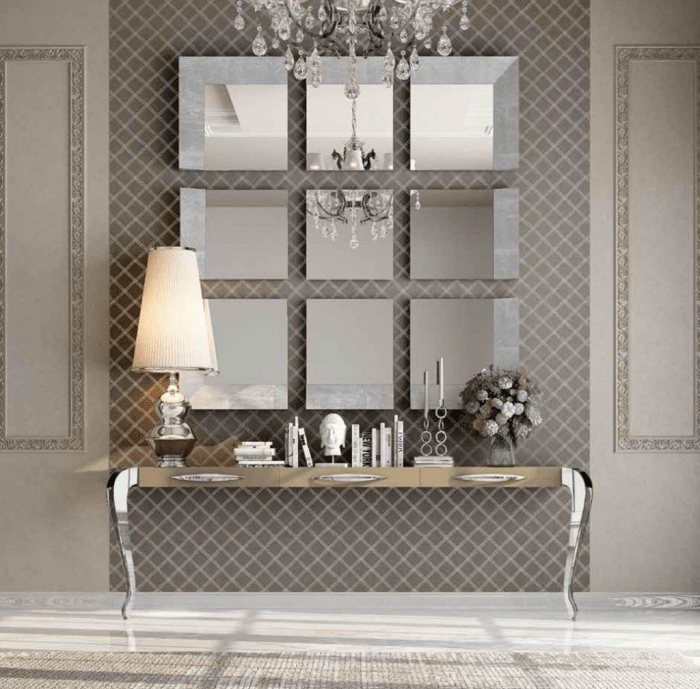
Source: magzhouse.com
To further clarify the versatility of custom wall mirrors, let’s examine three distinct examples showcasing diverse applications and design aesthetics. These examples highlight how custom mirrors can transform a space, reflecting both personal style and functional needs.
Grand Entryway Mirror
Imagine a magnificent, ornately framed mirror gracing the entrance of a stately home. This custom-made piece measures approximately 72 inches tall by 48 inches wide. Its frame, crafted from richly polished mahogany, is intricately carved with acanthus leaf motifs, adding a touch of classic elegance. The mirror itself is bevelled, enhancing its reflective quality and adding depth. The overall aesthetic is one of refined grandeur, perfectly complementing a traditional or transitional interior design style.
The mahogany’s deep, warm tones create a welcoming atmosphere, while the intricate carvings add a layer of sophistication. This mirror acts not only as a functional element but also as a statement piece, setting the tone for the entire home.
Modern Bathroom Mirror
In contrast to the grand entryway mirror, a minimalist design is ideal for a modern bathroom. This custom mirror, measuring 24 inches by 18 inches, features a sleek, rectangular frameless design. Its simple, clean lines and polished edges reflect the contemporary aesthetic. The mirror is mounted directly to the wall, maximizing space in a typically smaller room. The lack of a frame creates a sense of openness and airiness, while the high-quality reflection provides excellent functionality.
Custom wall mirrors offer a fantastic way to enhance any space, adding both style and functionality. Their reflective surfaces can dramatically alter the perceived size and ambiance of a room, and this extends even to outdoor areas. For instance, consider incorporating a strategically placed mirror near your patio furniture to create a sense of spaciousness, complementing your Outdoor patio decor scheme.
Ultimately, the versatility of custom wall mirrors makes them suitable for diverse applications, both indoors and out.
This minimalist design allows other bathroom fixtures and décor to take center stage, creating a harmonious and uncluttered space. The practicality of this mirror is complemented by its understated elegance.
Uniquely Shaped Mirror: Sunburst Design
For a more dramatic and eye-catching effect, consider a uniquely shaped custom mirror. A sunburst design, for instance, commands attention with its radiating pattern. This mirror could be approximately 36 inches in diameter, with its numerous, slender mirror pieces radiating outwards from a central point. The visual impact is significant, creating a focal point in any room. Its dynamic shape adds personality and visual interest, making it suitable for a variety of spaces, from a modern living room to a bohemian bedroom.
The reflective surface of the individual pieces multiplies light, brightening the room and creating a sense of spaciousness. The sunburst design’s versatility allows it to seamlessly integrate into different interior styles, adding a touch of artistic flair.
Ultimate Conclusion
In conclusion, the world of custom wall mirrors presents a realm of endless possibilities for enhancing both residential and commercial spaces. By carefully considering the design options, material choices, and installation methods, you can create a stunning focal point that reflects your unique taste and elevates the ambiance of any room. Whether it’s a grand, ornate mirror or a minimalist, functional piece, a custom wall mirror is an investment in both aesthetics and lasting value, adding a touch of personalized elegance to your surroundings.
Question Bank
What is the average turnaround time for a custom wall mirror?
Turnaround times vary depending on the complexity of the design and the manufacturer’s workload, but generally range from a few weeks to several months.
Can I provide my own frame or design?
Many manufacturers allow for the incorporation of client-provided materials or designs, although this may influence the final cost and timeline. It’s best to discuss this possibility directly with the manufacturer.
How do I clean a custom wall mirror without damaging it?
Use a soft, lint-free cloth and a gentle glass cleaner. Avoid abrasive cleaners or harsh chemicals. For stubborn marks, try a diluted solution of warm water and white vinegar.
What type of warranty is typically offered on custom wall mirrors?
Warranties vary by manufacturer, but generally cover defects in materials and workmanship for a specified period, often one to five years. Review the specific warranty details before purchase.
Are custom mirrors more expensive than standard mirrors?
Yes, generally custom mirrors are more expensive due to the personalized design, higher-quality materials often used, and the bespoke manufacturing process.


